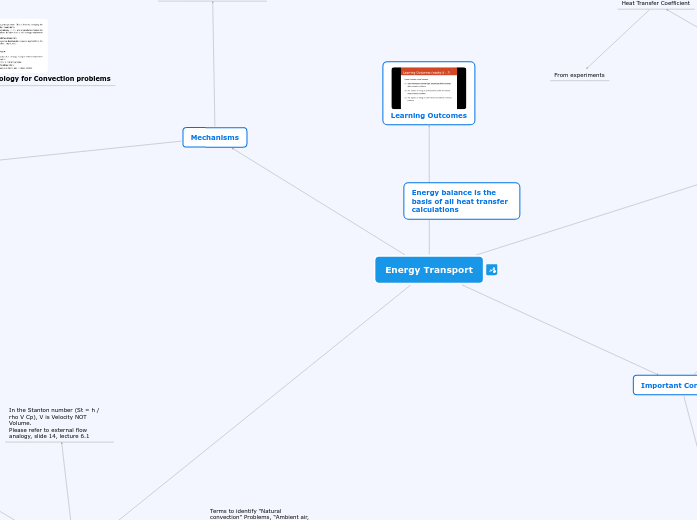Energy Transport
Mechanisms
Molecular Transport / Diffusion / Conduction
Steady state
Practice problems
Unsteady state
Non Lumped analysis
Finite Media
Semi Infinite
Multidimensional
Product rule for multidimensional heat transfer
Lumped Analysis
Convection
Internal Forced
Constant wall temperature
Constant heat flux
Practice Problems
External Forced
Practice Problems
Natural
Practice Problems
Problem Solving Methodology for Convection problems
Tips for Exam
In unsteady conduction problems, start calculation with Bi, unless heat transfer coefficient is an unknown
In the unsteady state conduction lumped analysis, b = hA / rho V Cp
It is to be noted that "rho and Cp" are of the solid NOT of the fluid
In non-Lumped finite medium analysis, Lc = L for plane, Lc = r for cylinders and spheres. But Lc = Volume / Surface area for lumped analysis
Terms to identify "Natural convection" Problems, “Ambient air, still air, quiescent air”
Easy method to find “Resistance term” for half cylinder – divide the denominator in the full cylinder resistance term by 2 and by 4 for a quarter cylinder etc.
For example R for full cylinder = ln (r2/r1) / 2 * Pi*KL (This is what will be given in the formulae sheet)
For half cylinder R = ln (r2/r1) / Pi*KL
For Quarter cylinder R = 2 ln (r2/r1) / Pi*KL
This method is applicable to sphere as well
In external forced convection over a sphere, fluid properties need to be estimated at the free stream velocity and in the Whitaker correlation
Reynolds analogy is for Pr = 1
Colburn analogy is for Pr not equal to 1
In the Stanton number (St = h / rho V Cp), V is Velocity NOT Volume.
Please refer to external flow analogy, slide 14, lecture 6.1
Internal Forced Convection: Terms to identify constant heat flux problems - constant heating, uniform heating, uniform flux.
Internal Forced Convection: Terms to identify constant Temperature problems - constant Temperature, uniform Temperature
laminar flow analogies (Reynolds for Pr = 1 and Colburn for Pr not equal to 1), applicable only for constant Temperature condition. Please note that Colburn analogy can be used for both laminar and turbulent flows (see Lec 6.2 slide 18)
In internal forced convection, wall condition matters only for laminar flow. For turbulent flow the correlation is same for both constant wall flux and constant wall temperature conditions
Important Concepts
Newton's law of cooling
Fourier's law
Fundamental Definition of HTC
Bi = hLc/K
Rate = Delta T / R
Macroscopic variables
Heat Transfer Coefficient
From Fundamental equations
From dimensional analysis
From experiments
friction factor
